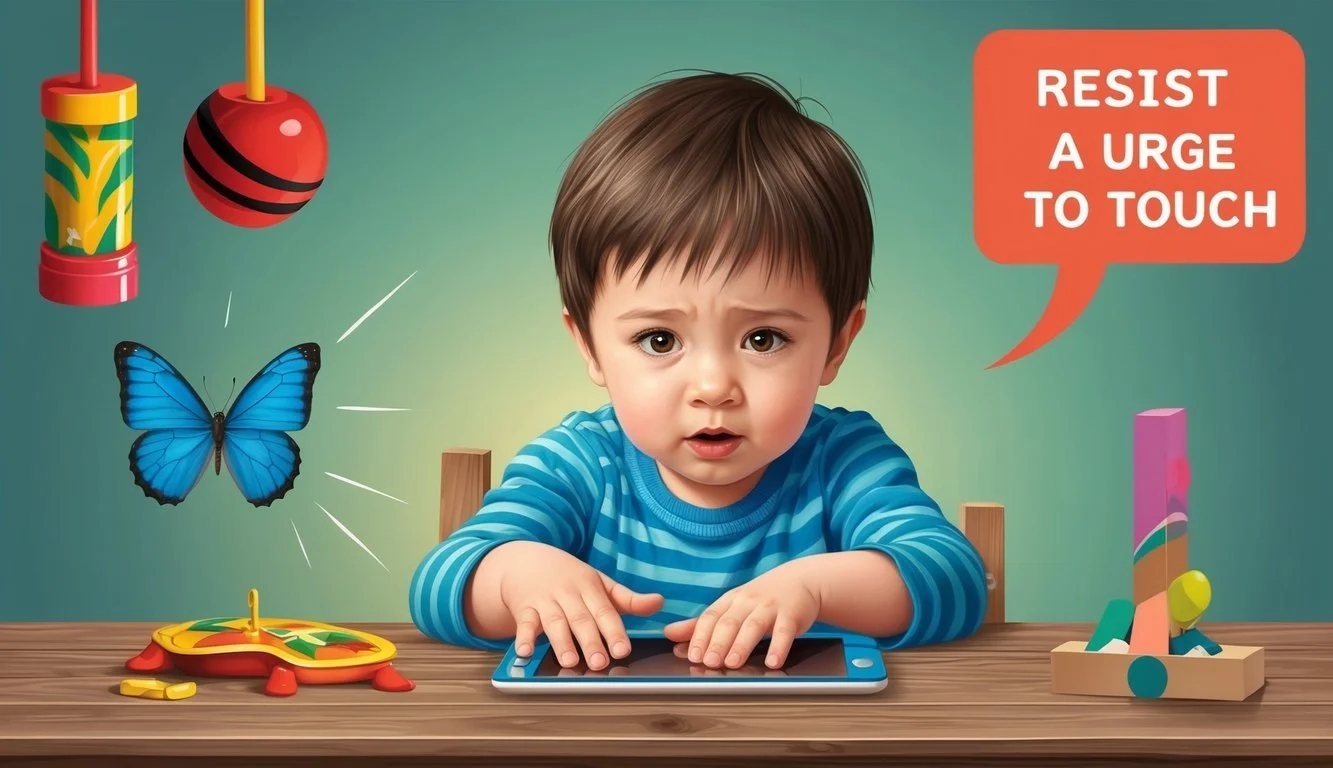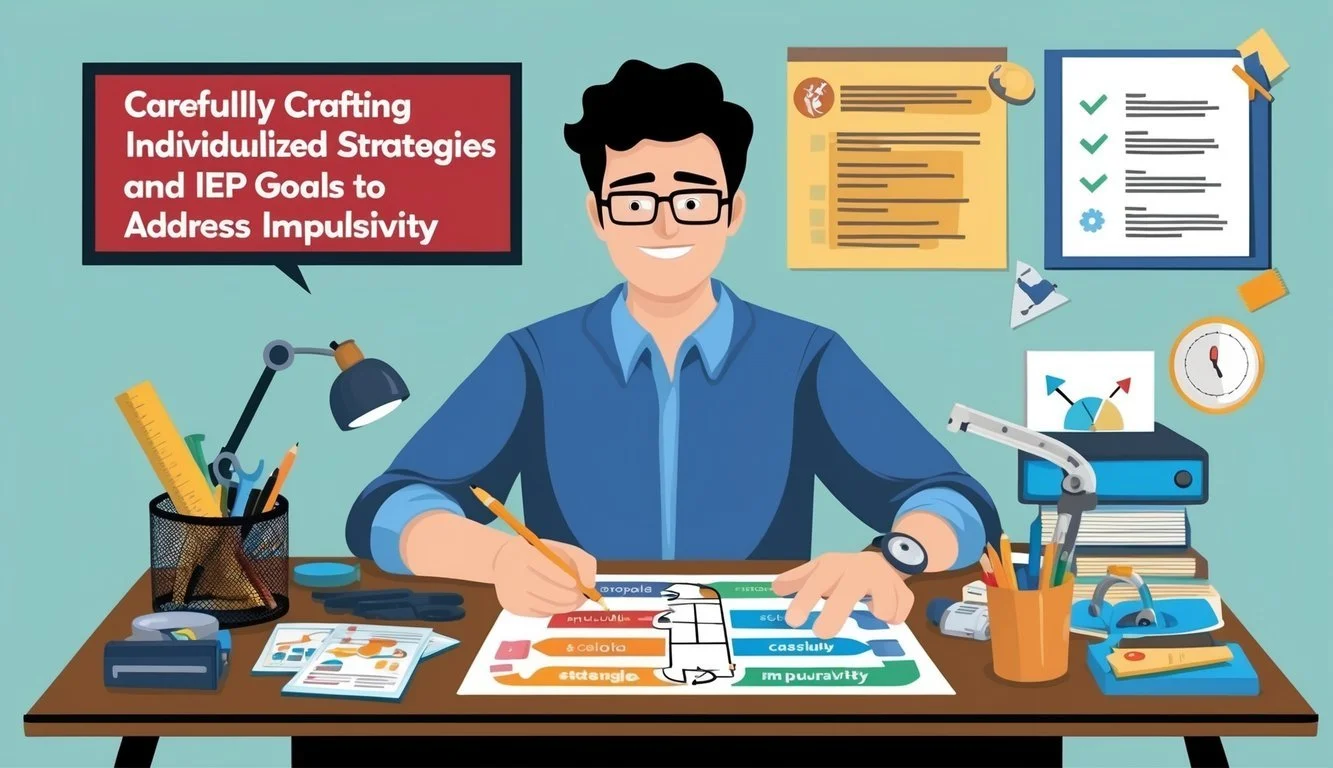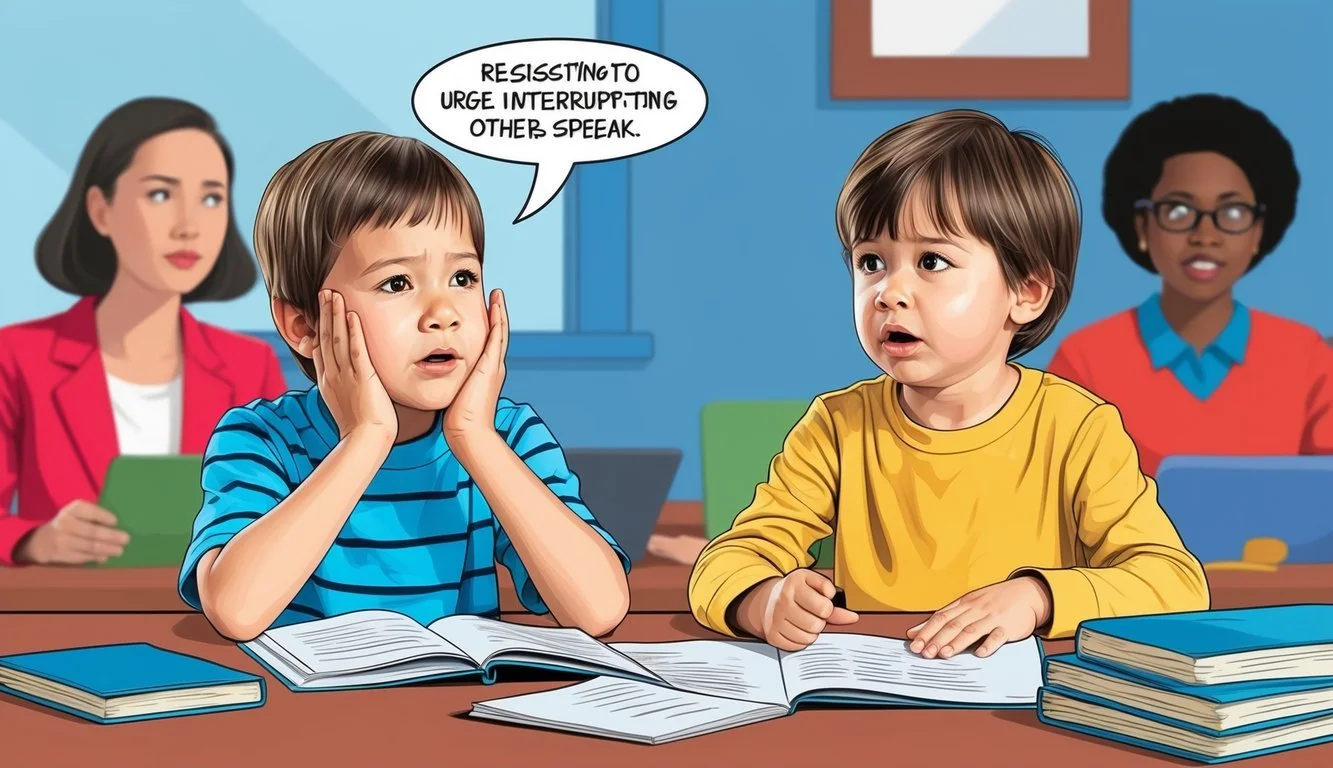Mastering Impulsivity: Essential IEP Goals for Student Success
Impulsivity can significantly impact a student's academic performance and social interactions. Individualized Education Program (IEP) goals focused on impulse control provide targeted strategies to help students manage their behavior effectively. These goals aim to improve self-regulation skills, enhance focus, and promote positive decision-making.
Well-crafted IEP goals for impulsivity typically include specific, measurable objectives that address the student's unique needs. Examples might involve using self-calming techniques, waiting for turns, or thinking before speaking. By setting clear expectations and providing structured support, educators can help students develop the skills necessary to navigate challenging situations and succeed in various environments.
Implementing impulse control strategies through IEP goals can lead to improved academic outcomes, better relationships with peers and teachers, and increased self-confidence. As students learn to manage their impulsive tendencies, they often experience greater success in both educational and social settings, paving the way for long-term personal growth and achievement.
Understanding Impulsivity in the Context of IEP Goals
Impulsivity significantly impacts student learning and behavior. Effective IEP goals can help manage impulsive tendencies and promote positive educational outcomes.
Defining Impulsivity and Its Impacts on Learning
Impulsivity is characterized by quick, unplanned reactions without considering consequences. In educational settings, it manifests as:
Blurting out answers before questions are completed
Interrupting others during conversations or activities
Difficulty waiting for turns
Acting without thinking in social situations
These behaviors can lead to:
Academic struggles due to incomplete work or careless mistakes
Social challenges and peer conflicts
Reduced classroom participation and engagement
Increased disciplinary issues
Impulsivity often coexists with other conditions like ADHD, affecting a student's ability to focus and regulate behavior.
The Role of IEP Goals in Managing Impulsivity
IEP goals for impulsivity focus on developing self-control and thoughtful decision-making. Effective goals target specific behaviors and provide measurable outcomes. Examples include:
Reducing interruptions during class discussions
Improving turn-taking skills in group activities
Increasing the use of self-regulation strategies
IEP teams should consider:
The student's current level of impulse control
Specific situations triggering impulsive behavior
Age-appropriate expectations for self-regulation
Goals should be regularly reviewed and adjusted based on progress. Collaboration between educators, parents, and specialists ensures comprehensive support for students managing impulsivity.
IEP Goal-Setting for Impulsivity
Effective IEP goals for impulsivity target behavioral, academic, and social-emotional domains. These goals aim to improve self-regulation, enhance focus during tasks, and develop positive interpersonal skills.
Behavioral Objectives Targeting Impulsivity
Behavioral goals focus on reducing impulsive actions and increasing self-control. A common objective is to decrease interruptions during class discussions. For example:
"By June 2025, [Student] will raise their hand and wait to be called on before speaking in class, with 80% accuracy across 4 out of 5 school days, as measured by teacher observation."
Another goal might target physical impulses:
"[Student] will remain in their seat during instruction for 15-minute intervals, with no more than 2 prompts, in 4 out of 5 observed sessions by the end of the school year."
These goals can be adjusted based on the student's current level of functioning and specific needs.
Academic Goals Related to Impulsivity
Academic goals address how impulsivity impacts learning and task completion. A typical goal might focus on improving attention to detail:
"Given a math worksheet, [Student] will check their work for errors before submitting, increasing accuracy by 25% compared to baseline, in 3 out of 4 assignments by the end of the semester."
Another goal could target task initiation and follow-through:
"[Student] will independently start and complete a 20-minute academic task without impulsively switching activities, achieving this in 4 out of 5 attempts, as documented weekly by the end of the school year."
These goals help students develop strategies to manage impulsivity in academic settings.
Social and Emotional Learning Goals
Social and emotional goals address impulsivity in interpersonal interactions. A goal might focus on turn-taking:
"During small group activities, [Student] will wait for their turn to speak or participate, successfully doing so in 75% of observed instances over a month, by the end of the school year."
Another goal could target emotional regulation:
"When feeling frustrated, [Student] will use a taught coping strategy (e.g., deep breathing, counting to 10) before reacting, in 3 out of 4 observed instances, by the end of the quarter."
These goals help students develop crucial social skills and emotional management techniques.
Assessment Strategies for Impulsivity Goals
Effective assessment of impulsivity goals requires systematic measurement and data analysis. Tracking progress and utilizing appropriate techniques are essential for evaluating a student's growth in impulse control.
Measuring Progress in Impulsivity Control
Behavioral rating scales provide a standardized method for assessing impulsivity. Teachers and parents can use these scales to rate the frequency and intensity of impulsive behaviors over time.
Direct observation is another valuable tool. Trained observers can record instances of impulsive actions during specific time periods or activities.
Self-monitoring checklists empower students to track their own behaviors. These checklists can include items like "I raised my hand before speaking" or "I waited my turn in line."
Task performance measures, such as computerized continuous performance tests, can objectively assess a student's ability to inhibit impulsive responses.
Data Collection and Analysis Techniques
Frequency counts involve tallying the number of impulsive behaviors observed within a set timeframe. This method provides quantitative data to track changes over time.
Duration recording measures how long an impulsive behavior lasts. It's particularly useful for behaviors like interrupting or leaving assigned areas.
Interval recording divides observation periods into smaller segments, noting whether the behavior occurred during each interval. This technique helps identify patterns in impulsive behaviors.
Antecedent-Behavior-Consequence (ABC) charts document events leading up to impulsive actions, the behaviors themselves, and their outcomes. This analysis can reveal triggers and reinforcers of impulsivity.
Graphing data visually represents progress over time. Line graphs or bar charts can illustrate trends in impulsive behaviors, making it easier to assess goal achievement.
Intervention and Support Strategies
Implementing effective strategies is crucial for addressing impulsivity in students with IEPs. These approaches focus on behavior management, classroom adjustments, and collaborative efforts to support students' self-regulation skills.
Behavioral Intervention Plans
Behavioral Intervention Plans (BIPs) provide structured guidance for managing impulsive behaviors. These plans outline specific strategies tailored to each student's needs.
A key component of BIPs is identifying triggers that lead to impulsive actions. By recognizing these triggers, educators can proactively intervene before behaviors escalate.
BIPs often incorporate positive reinforcement techniques. Students receive rewards or privileges for demonstrating self-control and following established guidelines.
Self-monitoring tools, such as behavior charts or goal-tracking sheets, help students become more aware of their actions. These visual aids promote accountability and encourage self-reflection.
Classroom Accommodations and Modifications
Creating an environment conducive to impulse control is essential. Seating arrangements can significantly impact behavior. Placing students away from distractions or near positive peer models can reduce impulsive tendencies.
Visual schedules and clear expectations posted in the classroom provide structure and predictability. These aids help students understand what is expected of them throughout the day.
Implementing frequent breaks or movement opportunities can help students release excess energy and refocus. Short "brain breaks" or stretching exercises between tasks can improve attention and reduce impulsive behaviors.
Providing fidget tools or stress balls allows students to channel their energy productively. These items can help satisfy the need for movement without disrupting others.
Collaboration with Parents and Specialists
Consistent communication between teachers, parents, and specialists is vital for effective impulse control management. Regular meetings ensure all parties are aligned on strategies and goals.
Parents can reinforce school-based interventions at home by using similar techniques and language. This consistency helps students generalize skills across different settings.
Occupational therapists can provide valuable input on sensory strategies that may help reduce impulsive behaviors. These might include weighted vests or specific seating options.
School counselors or psychologists can offer additional support through individual or group sessions focused on emotional regulation and social skills. These professionals can teach coping mechanisms and problem-solving techniques.
Developing Individualized Strategies
Tailoring strategies to each student's unique needs is crucial for addressing impulsivity effectively. These approaches focus on personalization and positive reinforcement to foster lasting behavioral changes.
Personalizing Goals for Student Needs
IEP goals should align with a student's specific challenges and strengths. Assess the student's current impulse control level through observations and data collection. Identify trigger situations that lead to impulsive behaviors.
Set realistic, achievable goals based on the student's baseline performance. For example, if a student frequently blurts out answers, an initial goal might be to raise their hand 3 out of 5 times during class discussions.
Incorporate the student's interests into goal-setting to increase engagement. A student who enjoys sports might have a goal related to waiting for their turn during team games.
Consider the student's age and developmental stage when crafting goals. Younger students may need simpler, more concrete objectives, while older students can handle more complex self-regulation tasks.
Reinforcing Positive Behaviors
Implement a consistent reward system to encourage impulse control. Use verbal praise, stickers, or a point system to recognize when students meet their goals.
Create a visual progress tracker that students can update themselves. This promotes self-awareness and motivation to maintain improved behaviors.
Teach self-monitoring techniques. Provide students with checklists or apps to track their own impulse control throughout the day.
Collaborate with parents to extend reinforcement strategies at home. Consistency across environments helps solidify new habits.
Use immediate feedback when students demonstrate impulse control. Quick recognition helps cement the connection between the desired behavior and positive outcomes.
Gradually increase the difficulty of impulse control tasks as students improve. This ensures continued growth and prevents plateauing.
Case Studies and Examples
Real-world examples illustrate the effectiveness of well-crafted IEP goals for impulsivity. These cases highlight successful strategies and common challenges faced during implementation.
Successful IEP Goals for Impulsivity
A 10-year-old student with ADHD showed significant improvement after implementing specific IEP goals. The goals focused on increasing self-awareness and developing coping strategies.
Goal: "John will identify his impulsive behaviors and use a self-regulation technique 4 out of 5 times when prompted, over a 6-week period."
Progress was measured through teacher observations and student self-reports. John learned to recognize physical cues of impulsivity and practiced deep breathing exercises.
Within two months, John's disruptive outbursts decreased by 60%. His academic performance improved as he spent more time on-task.
Challenges and Solutions in Goal Implementation
Consistency across different settings posed a challenge for many students with impulsivity goals. A 13-year-old student struggled to apply learned strategies outside the resource room.
To address this, her IEP team developed a coordinated approach:
Created visual reminders for all classrooms
Trained general education teachers on prompting techniques
Implemented a reward system for consistent behavior across settings
The student's ability to control impulses improved by 40% in general education classes over one semester. Regular team meetings ensured ongoing adjustments to the plan as needed.
Review and Adjustment of Goals
Regular evaluation and modification of IEP goals are crucial for addressing impulsivity effectively. This process ensures that interventions remain relevant and impactful as the student progresses.
The IEP Review Process
IEP teams typically conduct annual reviews to assess goal progress and effectiveness. These meetings involve educators, parents, and sometimes the student. Team members examine data collected throughout the year, including behavior logs, academic performance, and teacher observations.
The review focuses on:
Comparing current performance to baseline data
Identifying areas of improvement and ongoing challenges
Discussing the effectiveness of current strategies
Gathering input from all team members
More frequent reviews may be necessary for students with significant impulsivity issues. These additional check-ins allow for timely adjustments to support strategies.
Modifying Goals Based on Student Progress
Goal modification is a dynamic process that responds to the student's changing needs. When a student consistently meets their goals, the team may increase the difficulty or introduce new objectives. Conversely, if progress is slower than expected, the team might adjust the goal's timeline or break it into smaller, more achievable steps.
Key considerations for goal modification include:
Analyzing the root causes of success or struggle
Adapting strategies to better suit the student's learning style
Incorporating new interventions based on recent research or recommendations
Ensuring goals remain challenging yet attainable
The team may also revise goals to address emerging impulsivity-related issues or to build on newfound strengths.
Legal and Ethical Considerations
Creating IEP goals for impulsivity requires careful attention to legal requirements and ethical practices. Educators must balance compliance with educational laws and protection of student rights throughout the IEP process.
Ensuring Compliance with Educational Laws
The Individuals with Disabilities Education Act (IDEA) mandates that IEPs provide appropriate education tailored to each student's needs. Goals addressing impulsivity must align with grade-level standards while remaining achievable. Schools must document how goals are measured and progress is monitored.
Key legal requirements:
Goals must be specific, measurable, and time-bound
Regular progress reports to parents
Annual review and revision of IEP goals
Consideration of positive behavioral interventions
Failure to comply with IDEA can result in due process complaints or legal action by parents. Schools should consult special education laws when developing impulsivity goals to ensure full compliance.
Protecting Student Rights in the IEP Process
Students and parents have important rights during IEP development. These include participation in meetings, access to educational records, and consent for evaluations. For impulsivity goals, input from the student and family is crucial.
Essential protections:
Confidentiality of student information
Least restrictive environment considerations
Non-discriminatory evaluation procedures
Parental right to disagree with IEP team decisions
Schools must inform families of their rights in writing. Using a collaborative approach that respects student and parent perspectives helps create effective, legally sound impulsivity goals. Providing accommodations for parents, such as interpreters if needed, ensures meaningful participation in the IEP process.
Resources for Educators and Families
Effective support for students with impulsivity requires access to quality resources. Educators and families benefit from professional development opportunities and practical tools to implement strategies in various settings.
Professional Development on Impulsivity
Teachers and parents can enhance their understanding of impulsivity through workshops and online courses. Many school districts offer in-service training on executive functioning skills, including impulse control.
Organizations like CHADD (Children and Adults with Attention-Deficit/Hyperactivity Disorder) provide webinars and conferences focused on managing impulsive behaviors. These events often feature expert speakers and practical classroom strategies.
Universities and educational institutions frequently host summer institutes on special education topics, including impulsivity management. These intensive programs allow educators to dive deep into research-based interventions.
Educational Materials and Tools
A variety of resources are available to support impulse control development in students. Visual aids like behavior charts and reward systems can be effective tools for tracking progress and reinforcing positive behaviors.
Books such as "The Impulse Control Workbook for Kids" offer exercises and activities to help children practice self-regulation. These materials can be used both at home and in school settings.
Digital apps and software programs designed to improve executive functioning skills are increasingly popular. Tools like "Calm Counter" and "Zones of Regulation" provide interactive ways for students to recognize and manage their impulses.
Curriculum materials that incorporate social-emotional learning (SEL) often include units on impulse control. These resources typically offer lesson plans, worksheets, and discussion guides for classroom use.



